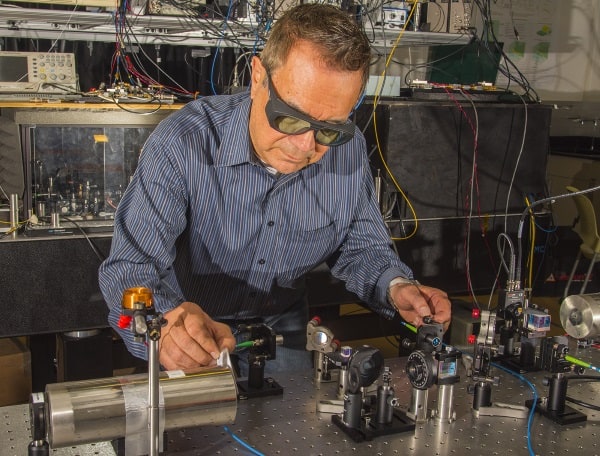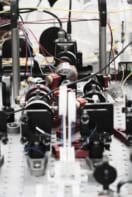
A new “quantum radio” system could be a viable alternative to GPS in locations where the satellite-based navigation system is unreliable. Currently being developed by Dave Howe and colleagues at the National Institute of Standards and Technology (NIST) in Maryland, US, the system uses the quantum properties of specialized magnetic field sensors to transmit and receive signals.
Electromagnetic fields generated by alternating currents are often used in wireless communication systems like GPS. However, these signals are strongly attenuated in materials like metal, concrete, soil and water, making communication difficult in built-up or underwater environments. Attenuation can be reduced if lower frequencies are used, but this comes at the cost of bandwidth and sensitivity, meaning not as much data can be transmitted.
High-bandwidth communications
“The best magnetic field sensitivity is obtained using quantum sensors,” says Howe. “The increased sensitivity leads in principle to longer communications range,” he explains, adding that “The quantum approach also offers the possibility to get high-bandwidth communications like a cellphone has.”
The NIST team is building its quantum radio using specialized atomic magnetometers. These devices are typically used to measure naturally-occurring magnetic fields, but could also be used to receive artificially-created fields such as digital communication signals.
Polarized light
The NIST team’s direct-current magnetometer will use polarized light to observe changes in the spin state of rubidium atoms, induced by oscillations in the transmitted magnetic field. An alternating current would then be induced in the detector, allowing for clear communication signals. The detector should be able to pick up signals far weaker than background magnetic field noise, and even at very low frequencies, below 1 kHz.
“Atoms offer very fast response plus very high sensitivity,” Howe explains. “Classical communications involves a trade-off between bandwidth and sensitivity. We can now get both with quantum sensors.”
The team describes the capabilities of its atom magnetometer in Review of Scientific Instruments.



